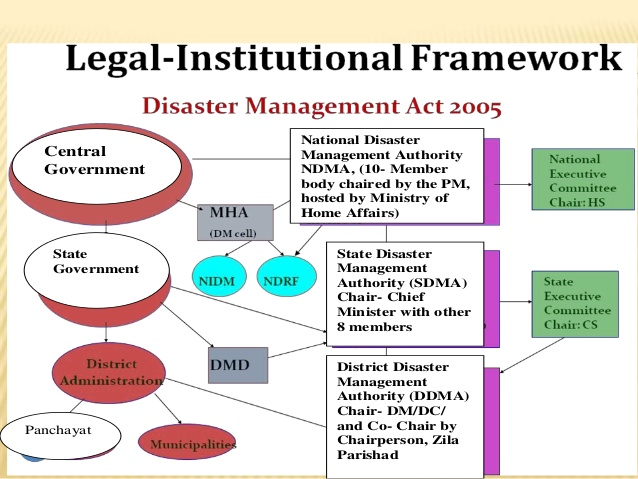
In News-
The Ministry of Home Affairs invoked the stringent Disaster Management Act 2005 to direct states to ensure the movement of oxygen tanks without any restriction.
- Earlier in March 2020 various government authorities invoked their respective powers under the DM Act to deal with the Covid-19 outbreak in the country.
Disaster Management Act, 2005
- It was enacted by the Parliament of India on December 23, 2005.
Objective
- It is a national law that empowers the Central government to declare the entire country or part of it as affected by a disaster and to make plans for mitigation to reduce “risks, impacts and affects” of the disaster.
Nodal Authority
- The Act designates the Ministry of Home Affairs as the nodal ministry for steering the overall national disaster management.
Key Features
- It puts into place a systematic structure of institutions at the national, state and district levels.
Four important entities have been placed at the national level:
- National Disaster Management Authority (NDMA): It is tasked with laying down disaster management policies and ensuring a timely and effective response mechanism.
- National Executive Committee (NEC): It is composed of secretary level officers of the Government of India assigned to assist the NDMA.
- National Institute of Disaster Management (NIDM): It is an institute for training and capacity development programs for managing natural
- National Disaster Response Force (NDRF): It refers to trained professional units that are called upon for specialized response to disasters.
State and District Level Disaster Management
- The Act also provides for state and district level disaster management authorities responsible for, among other things, drawing plans for implementation of national plans.
Financial Mechanism
- The Act further contains the provisions for financial mechanisms such as the creation of funds for emergency response, National Disaster Mitigation Fund and similar funds at the state and district levels.
Coverage
- It covers all man-made and natural disasters which are beyond the coping capacity of a community.
Punishment
- Under Section 51 of the DM Act, anyone refusing to comply with orders is liable for punishment with imprisonment up to one year, or fine, or both.
- In case this refusal leads to the death of people, the person liable shall be punished with imprisonment up to two years.

Image Courtesy: Slideshare
Issues
- The Act characterizes every disaster as a sudden occurrence and completely fails to take into account that disasters can be progressive in nature as well.
- The Act calls for establishment of multiple- national level bodies, the functions of which seem to be overlapping, making coordination between them cumbersome.
- Delayed response, inappropriate implementation of the plans and policies, and procedural lags plague the disaster management scheme in India.
- Inadequate technological capacity for accurate prediction and measurement of the disaster result in large scale damage.
Conclusion
- India has shown immense improvement in its dealing with disasters over the years, particularly in pre- disaster mitigation.
- However, experts feel that there are still miles to go before the system is perfected and the authorities are equipped to deal with disasters of every kind and magnitude.
- New disaster management guidelines are underway and we can only hope it incorporates provisions to overcome dysfunctions of the current authorities .
- The civil society, private enterprises and NGOs can play a valuable role towards building a safer India.
|
How is ‘Disaster’ and ‘Disaster management’ defined by Act?
|
Previous article
National Panchayati Raj Day
Next article
Gender Bias and Inclusion In Advertising: UNICEF